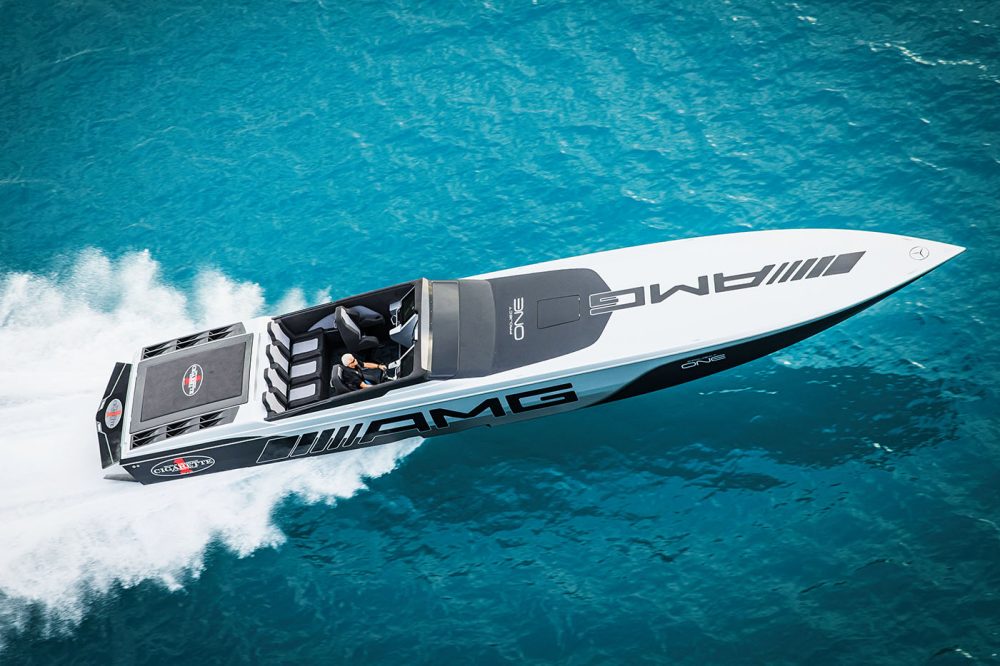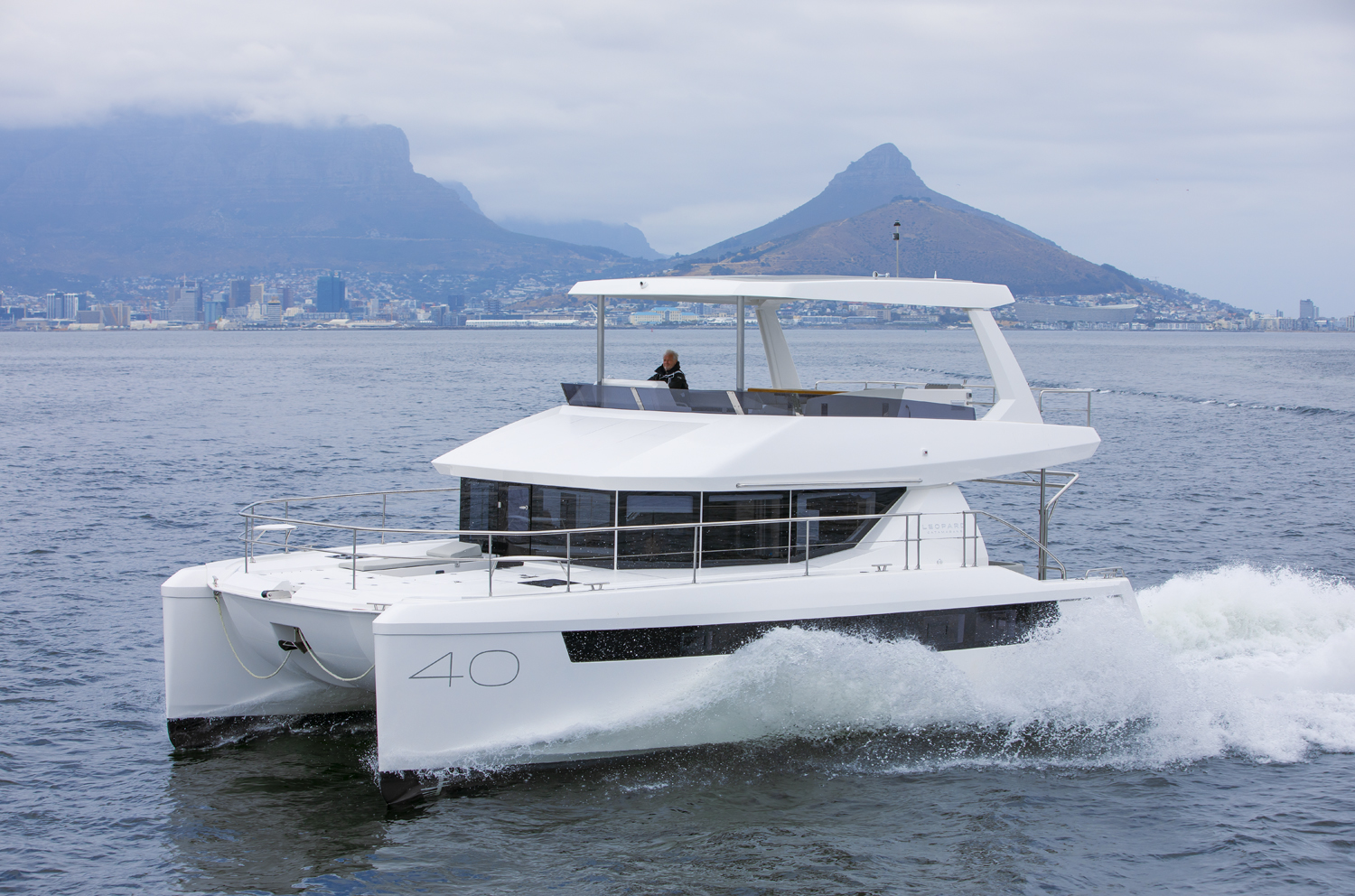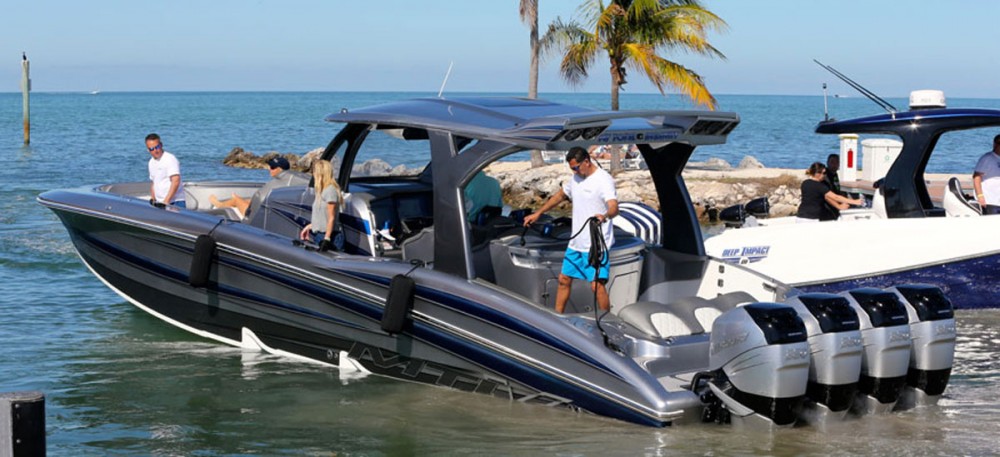Advantages of Power Cats: Stability, Space And Speed
An analysis of some of the advantages of a power cat versus traditional monohull boats. Stability, space, comfort, redundancy, economy and speed are some of the main selling points of a power cat.
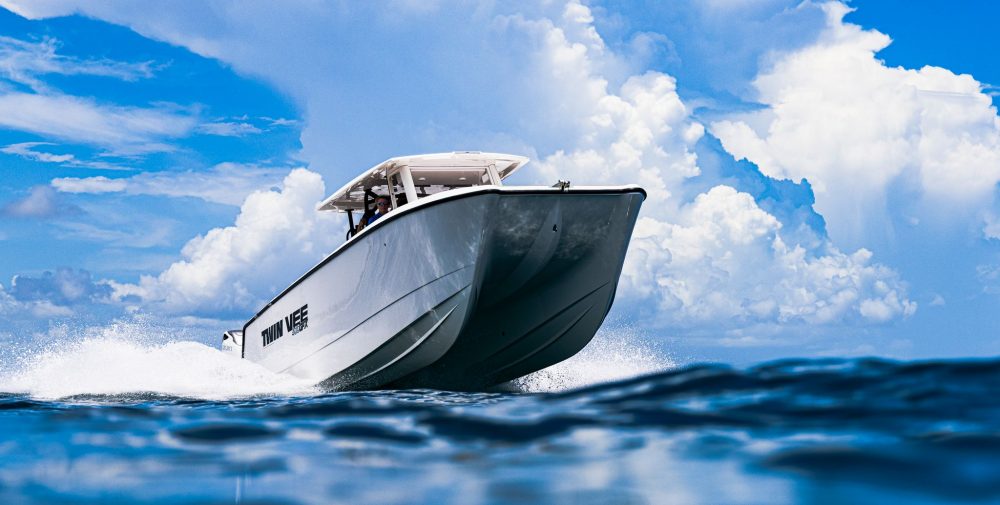
What’s the deal with that funny looking dual hull, anyway? Why bother with a powercat, you might ask? These types of boats may look a little different, however there are certainly numerous advantages to the powercat. Here we’ll go over a few of the biggest selling points of a catamaran hull for a power boat versus a traditional monohull so you can consider if a dynamic twin hull boat might be the right choice for you.
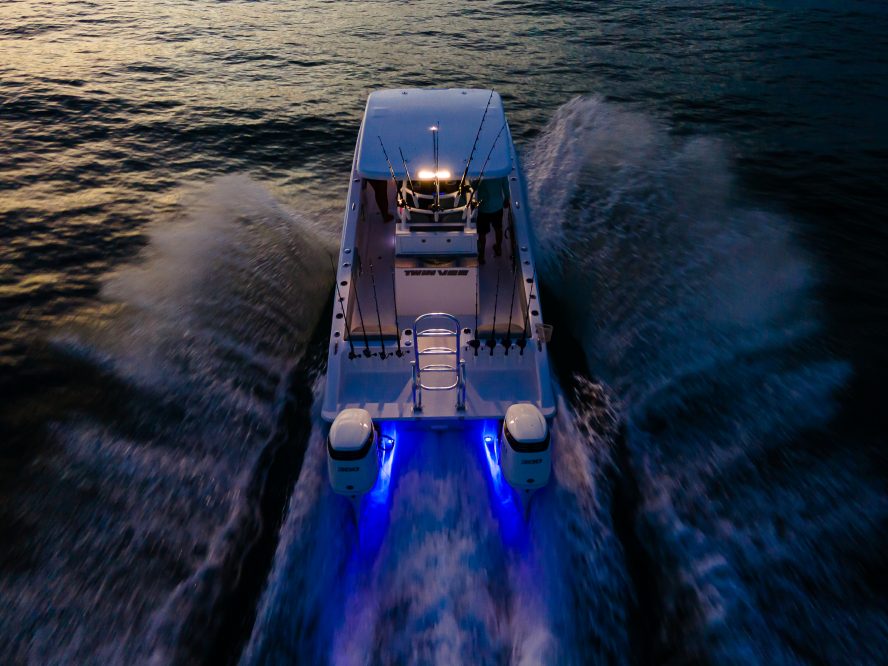
STABILITY
The most widely known advantage of a powercat vs monohull is the stability that the twin hulls provide, focusing the buoyancy on the outside of the boat (versus the middle). Generally speaking, a well designed catamaran will have a smoother, more stable ride than your average monohull. This is due to basic hydrodynamics. A catamaran, with two smaller hulls, pushes less water than one large v-hull. Since there’s less resistance, the catamaran will run faster and feel more soft and cushy, particularly in a head sea. Specifically, you can count on an increase in static stability, as well as a reduction in wave impact (including the amount of time it takes the boat to right itself after rolling a wave.)
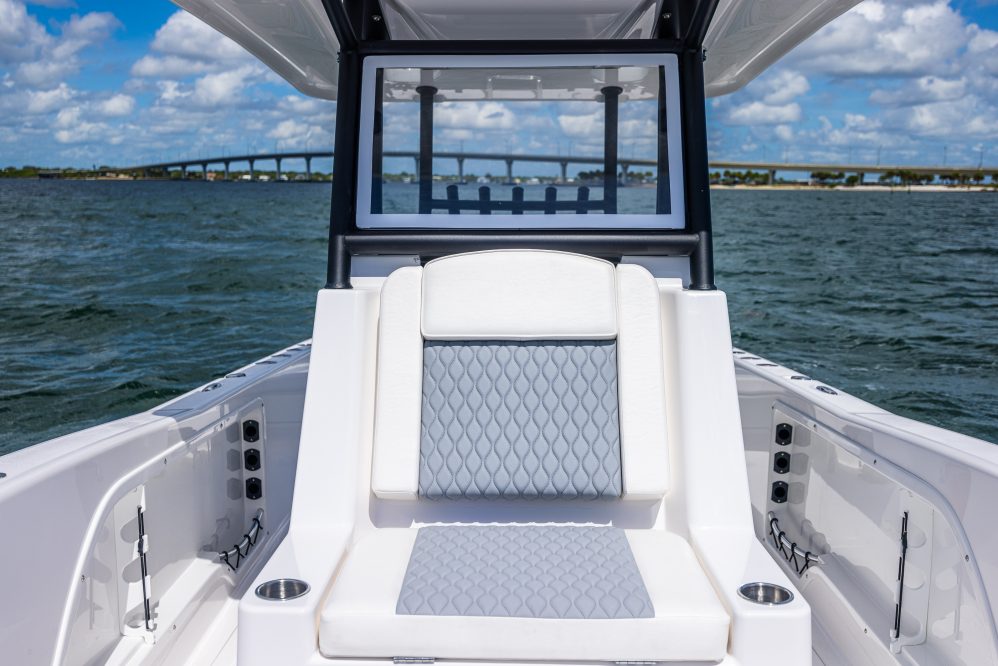
ADDITIONAL ONBOARD SPACE AND STOWAGE
The wider beam on power cats such as the Twin Vee 280 GFX and the Worldcat 280 CC-X give boaters much more usable space onboard in a wide variety of areas on the boat, versus a standard monohull. Without the traditional pointed shape of a regulation hull, there’s typically much more deck space forward on a catamaran. Because of their wide beam, cats typically feel like oversize boats. Meaning, a cat with a 28’ LOA will really seem like a 30-31’ standard boat because of all the extra room. It’s important to take this into consideration when factoring in the price of the boat as well. Besides the noticeably larger deck, two hulls also offer more underfloor space in the form of berths, tankage, storage and refrigeration.
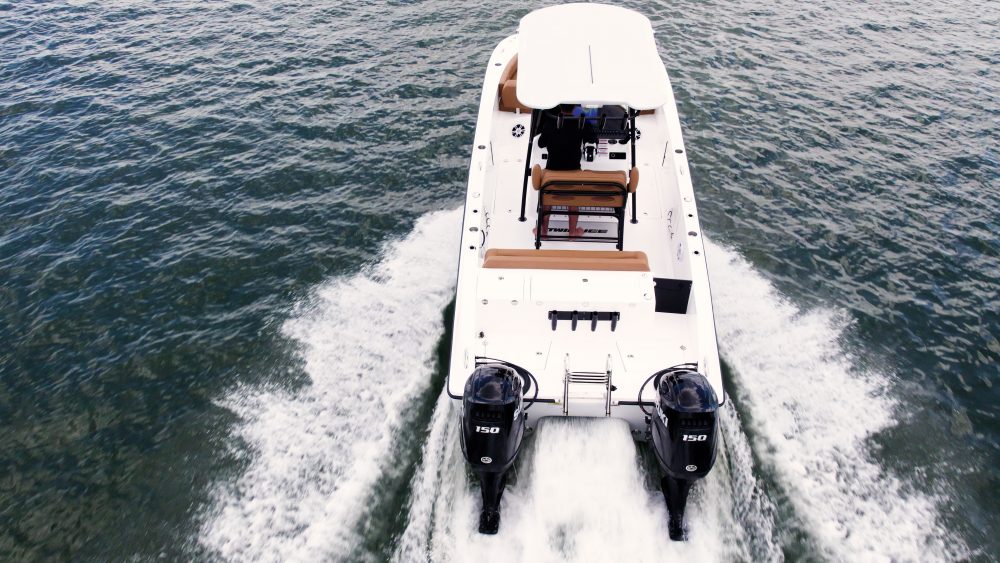
COMFORT
Clearly stability and space contribute to the additional comforts a powercat affords the rider, but there’s more. Powercats like the Twin Vee 400 GFX are able to carry much greater loads without significant loss of stability or performance, whereas a traditional monohull boat can quickly become overloaded and unstable. Additionally, in terms of maneuverability, because the motors/props are so far apart - the powercat will simply handle much better in wind and in close quarters, with the ability to spin 360 degrees in its own length. For fishing especially, the design of a catamaran lends itself to be easy to handle at low speeds and spin in the tiniest of circles. You’ll also typically stay more dry in a powercat, with the narrow hulls throwing minimal amounts of water back up for the wind to take you as you plow through those waves.
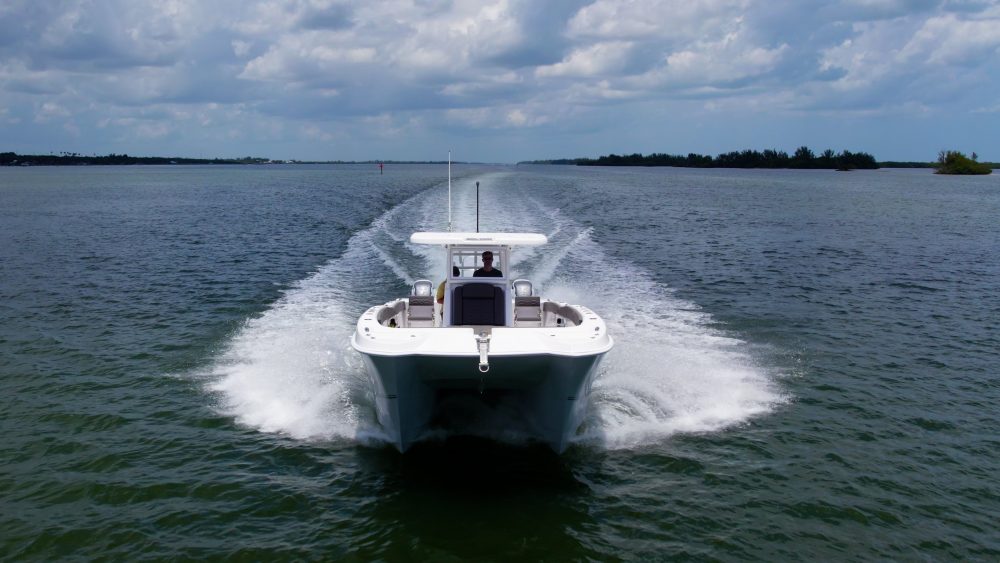
ECONOMY AND SPEED
Many published trials have illustrated that there is very little difference in planing a powercat versus planing a monohull. While cats might take a little longer to get up on the plane, they actually run more efficiently once on the plane. This is due to the planing surface, or “delta pad” not having to rely on lifting strakes in order to lift the boat. Instead, a catamaran’s planing pads act like the lifting strake, which can allow for planing at lower speeds as well. Powercats have also been proven to be more fuel efficient than their counterparts when riding in calm water.
While the advantages of powercats are too numerous to ignore, they are still a relatively new, smaller share of the fishing boat market. There are now several cutting edge manufacturers who are dedicated to continually innovating and refining sporty power catamaran boat designs, including:
- Twin Vee
- WorldCat
- Invincible
- Freeman
- Barker
- Aquila
- Fountaine Pajot
- Nautitech
- Leen
- Leopard
- Lagoon
- Sunreef, to name
The list above is just a few of the top boat brands building power catamarans. The variety of new models on the market ensure that there’s a right vessel for virtually every type of boater.
REDUNDANCY
For serious offshore anglers who prefer redundancy, power catamarans virtually all have 2 engines, which provides captains that added redundancy on long runs into the deep blue, while making them more stable in case of an emergency. This is where brands like Freeman and Invincible shine. For families looking to cruise on a power cat, brands like Fountaine Pajot, Leopard, Sunreef and Lagoon stand out with their onboard amenities and creature comforts.
SO WHAT'S THE CATCH? MONO VS DUAL HULL
If you're considering a power catamaran versus a monohull, there are some pros and cons to each you should consider. Whether you're in the market for a new boat from a dealer, or a used boat for sale online from a private seller, remember that all vessels are designed for specific activities and waterways and each has its set of pros and cons. No one vessel is perfect for every scenario.
For example, most modern power boats with monohulls have a deep V-shape hull that can make them more maneuverable than dual hull catamarans, making them generally easier to dock. Then again, catamarans with modern joystick control systems and smart docking systems can alleviate much of the challenges to close quarter maneuvering. Another thing to consider is that monohulls will have lower maintenance costs, since they have fewer moving parts than catamarans. On the flip side, they will often deliver a rougher, less stable ride than catamarans with less onboard space.
Overall, catamarans are a great choice for those who prioritize stability, speed, spaciousness, comfort, and safety. However, they do have some disadvantages as well, such as higher initial cost, increased beam width, and potential difficulty maneuvering in tight spaces.
Find Power Catamarans For Sale on boats.com Today










